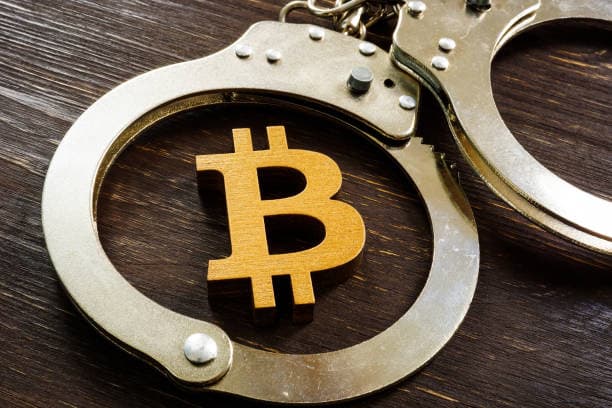How are Bitcoin Transaction Fees Calculated? Ways to Reduce Costs Explained
Bitcoin trading fees have been a major concern for many investors. Whether you're a long-term holder or a short-term trader, trading fees can have a direct impact on your returns. Today, Mike will take you on a deeper dive into how Bitcoin trading fees are calculated and share some effective ways to help you minimize these costs. Whether you're a beginner or an experienced trader, understanding these key points is crucial to improving your trading performance. Join Mike as he looks at how to reduce your trading costs in this volatile market and make your investments more competitive!

Basic Structure of Bitcoin Transaction Fees
Bitcoin transaction fees consist of two main components: the transaction fee and the network confirmation fee. The transaction processing fee is a fee charged by the exchange, which typically varies based on transaction volume, account level, and current market conditions. Network confirmation fees are paid to Bitcoin blockchain miners to ensure that transactions are processed and confirmed quickly. These fees are unavoidable in Bitcoin trading, so it's important to understand how they are calculated and what factors affect them.
Calculation of Exchange Fee
Trading fee structures vary from exchange to exchange. Typically, exchanges have different rate tiers based on a user's trading volume. Most exchanges use a "market maker" and "order taker" model, which means that when you provide liquidity (place a limit order), the exchange charges a lower fee, and when you accept liquidity (market order), it charges a higher fee. For example, on a large exchange like OKX, the trading fees can range from 0.1% to 0.2%, depending on the volume of the trade. Understanding these fee structures can help you make a more favorable decision when choosing an exchange.
Factors Affecting Bitcoin Network Transaction Fees
Bitcoin transaction fees are also affected by the level of network congestion. Whenever the Bitcoin network is at its peak, the blockchain confirmation fees that exchanges have to pay go up. Because Bitcoin has a limited block size, this means that miners will only prioritize transactions if they are above a certain level. On the other hand, when the network is relatively quiet, confirmation fees are relatively low and transactions are processed faster. Therefore, when the network is congested, if you can choose a lower fee and wait patiently for the transaction to be confirmed, you can also reduce the overall cost to a certain extent.
How to choose the right exchange to lower your fees
When choosing an exchange, differences in the fee structure of different exchanges may have a greater impact on the cost of trading. In addition to rates, you should also pay attention to the exchange's top-up and withdrawal fees, and whether there are additional hidden fees. In the case of Euronext, for example, in addition to offering competitive trading fees, there are a number of incentives that can further reduce costs. For example, Euronext offers a trading fee waiver program that allows users to enjoy lower rates based on their trading volume. By choosing the right exchange, you can effectively reduce your trading fees and thus increase your overall revenue.
How to Reduce Bitcoin Transaction Costs with Limit Orders
Using Limit Orders is an effective way to reduce Bitcoin transaction fees. A Limit Order is where you set a specific price and the order is only executed when the market price reaches or exceeds that price. The benefit of this is that a limit order can often enjoy lower fees than a market order, as the limit order provides liquidity to the market. When using limit orders, you can also control the entry price and avoid paying excessive transaction fees due to market volatility. Therefore, if you are looking to save money on your trading, choosing a limit order is a good option.

How to choose the right time to trade during busy periods
The Bitcoin trading market operates 24 hours a day, but not all hours have the same transaction fees. Typically, Bitcoin trading fees are higher during periods of active market activity, as network congestion may result in increased confirmation fees. To minimize trading costs, you can choose to operate during periods of lower trading volume. Depending on the exchange, trading volume is usually lower during weekends or late at night (Taiwan time), when trading fees may be more favorable. Knowing the market's trading hours and choosing the best time to trade can save you money.
How to take advantage of exchange rebate programs to further reduce costs
Many exchanges offer rebate programs, which are an effective way to reduce Bitcoin trading fees. Rebate programs usually return a percentage of the handling fee based on your trading volume, the number of native tokens you hold, and other factors. For example, OKX reimburses users based on their trading volume and the number of OKB tokens they own; the higher the trading volume or the more OKB tokens they hold, the higher the rebate percentage. Through these rebate programs, users can enjoy lower costs when trading and further increase their investment returns.
How to Avoid Hidden Fees
In addition to explicitly displayed trading fees, some exchanges may also charge hidden fees such as withdrawal fees, top-up fees, etc. These fees are often not explicitly listed on the trading page, but can have a significant impact on your overall costs. These fees are often not explicitly listed on the trading page, but can have a significant impact on your overall costs. In order to avoid these hidden fees, you should read the terms and conditions of the exchange you choose to trade on and be aware of all possible additional fees. The choice of withdrawal method and currency can also affect fees, for example, some exchanges charge higher fees for certain withdrawal methods. By choosing a reasonable withdrawal method and budgeting your fees, you can minimize the impact of hidden fees.
Frequently Asked Questions Q&A
1. Why do Bitcoin transaction fees change?
Changes in Bitcoin transaction fees are primarily influenced by market demand and exchange policies. Transaction fees and network confirmation fees tend to increase when market demand is high and trading volumes increase; conversely, these fees may decrease when market demand is low.
2. How do I calculate the network confirmation fee for a Bitcoin transaction?
The network confirmation fee for Bitcoin depends on how congested the blockchain is. If the transaction volume is high, the miners will prioritize the more expensive transactions, so the confirmation fee will increase. In this case, users can choose to pay a higher fee to speed up the transaction confirmation, or wait longer to save money.
3. Is the rebate program effective in reducing Bitcoin transaction fees?
Rebate programs can be really effective in reducing trading fees, especially if you have a high trading volume or hold a certain amount of exchange native tokens. With a rebate program, you can get a percentage of your fees back, which can significantly reduce your trading costs.














